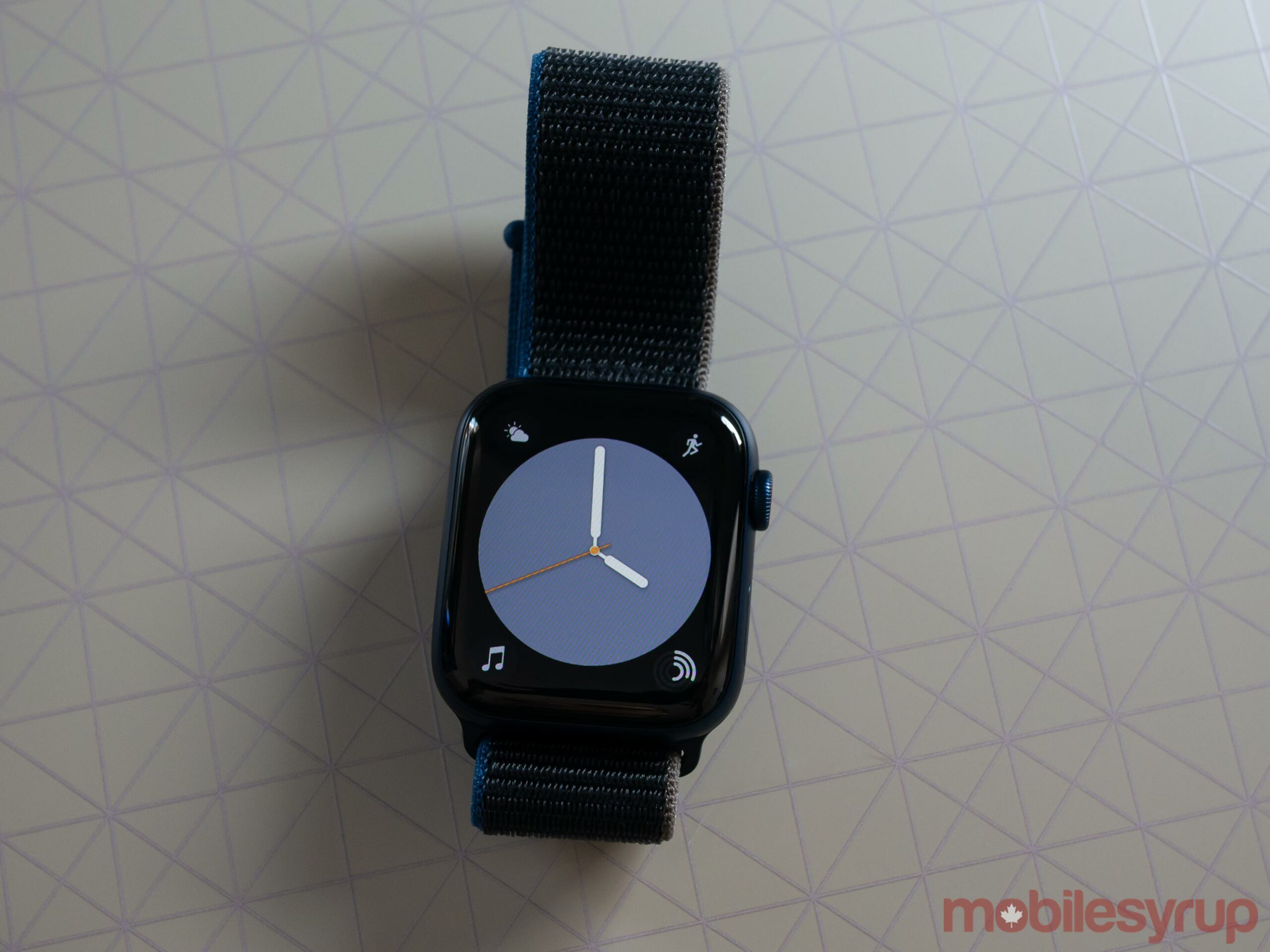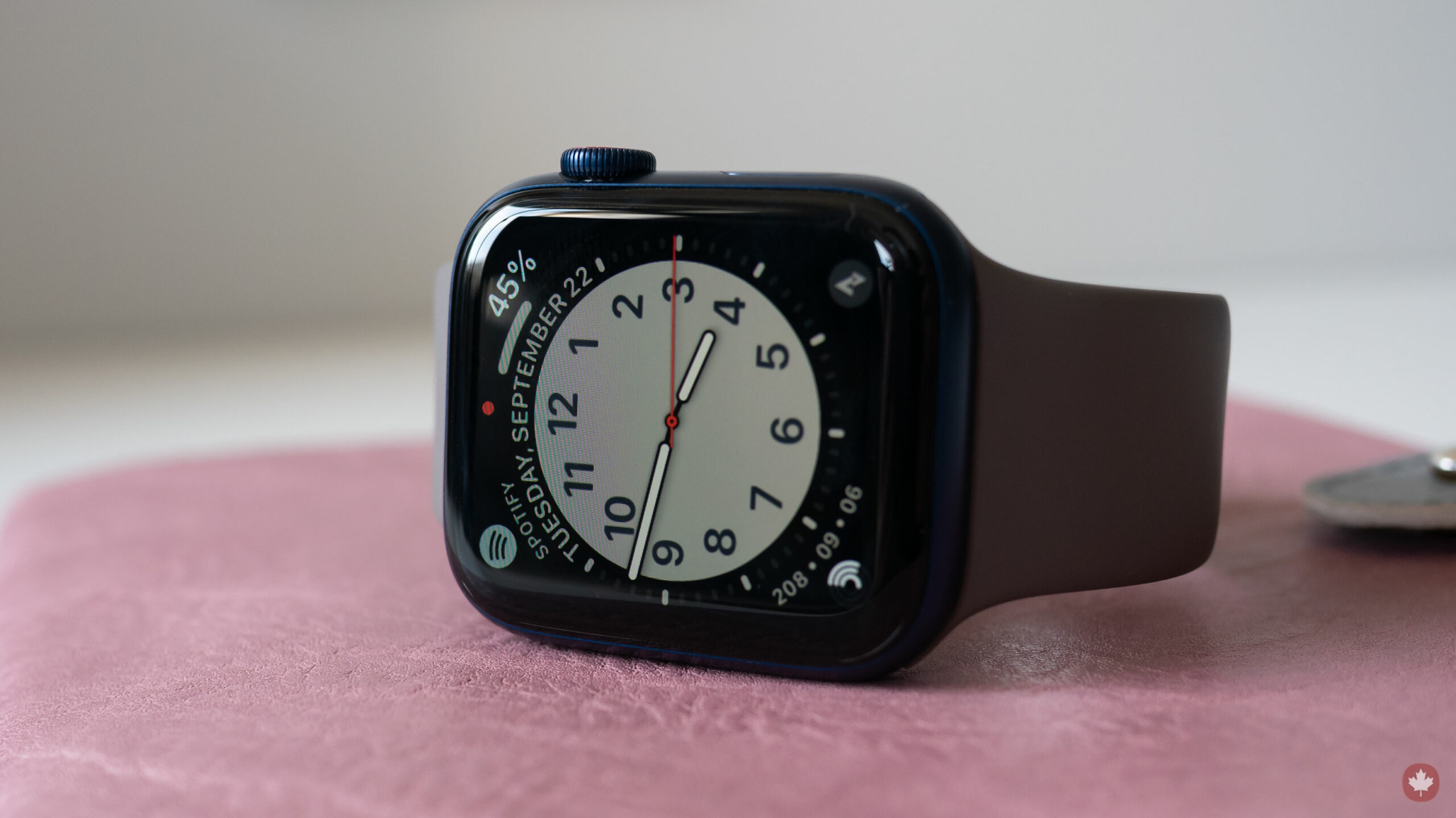
The Pros
- The already bright always-on screen is now brighter
- Charging is faster
- Processor is more powerful
The Cons
- Overall an iterative update over its predecessor
- Best watchOS 7 features also coming to older versions
- Apple Watch SE offers similar functionality
While some framed the Apple Watch Series 5 as an iterative step forward for the smartwatch, to me, it felt like a significant leap over previous versions of the wearable thanks to its LTPO always-on display.
This year, however, feels far more like a half-step. That’s not to say that the Apple Watch Series 6 isn’t a worthwhile upgrade, because depending on what you use the smartwatch for, the new health features could be right up your alley.
The watch itself looks identical to the design with minimized bezels that Apple first introduced with the Series 4. The significant new Series 6 features are a faster S6 chip, a brighter always-on display and the new blood-oxygen sensor.

There are other improvements as well, including several new features coming as part of watchOS 7 like ‘Sleep’ tracking and additional workouts, but similar to previous releases of the wearable operating system, most of these upgrades are also making their way to earlier versions of the smartwatch.
Just like nearly all modern flagship smartphones, but especially the iPhone, the Apple Watch seems to have hit a point of maturity where each subsequent version of the wearable doesn’t necessarily include radical new functionality. Instead, new Apple Watch iterations offer relatively minor upgrades over their predecessors.
With that in mind though, the Apple Watch Series 6 is still the best smartwatch currently available for iPhone owners. The main question surrounding the device is whether it’s worth the upgrade for you.
Specs
- Network technology: GSM / HSPA / LTE
- Launch: September 15
- Dimensions: 44 x 38 x 10.4mm (1.73 x 1.50 x 0.41-inches)
- Weight: 47.1 g (1.66 oz)
- SIM: Electronic SIM card (eSIM)
- 50m water resistant
- ECG certified
- Display: Always-on Retina LTPO OLED 448 x 368 pixel resolution (1000 nits max brightness, 500 nits in wrist-down state)
- Size: 10.0cm2 (1.78-inches)
- Chipset: Apple S6
- Storage: 32GB
- Charging: Proprietary wireless (not Qi)
- Wi-Fi: 802.11 b/g/n, dual-band
- Bluetooth: 5.0, A2DP, LE
- Colours: Blue, Red, Silver, Graphite, Gold (aluminum and stainless steel)
Blood oxygen level detection
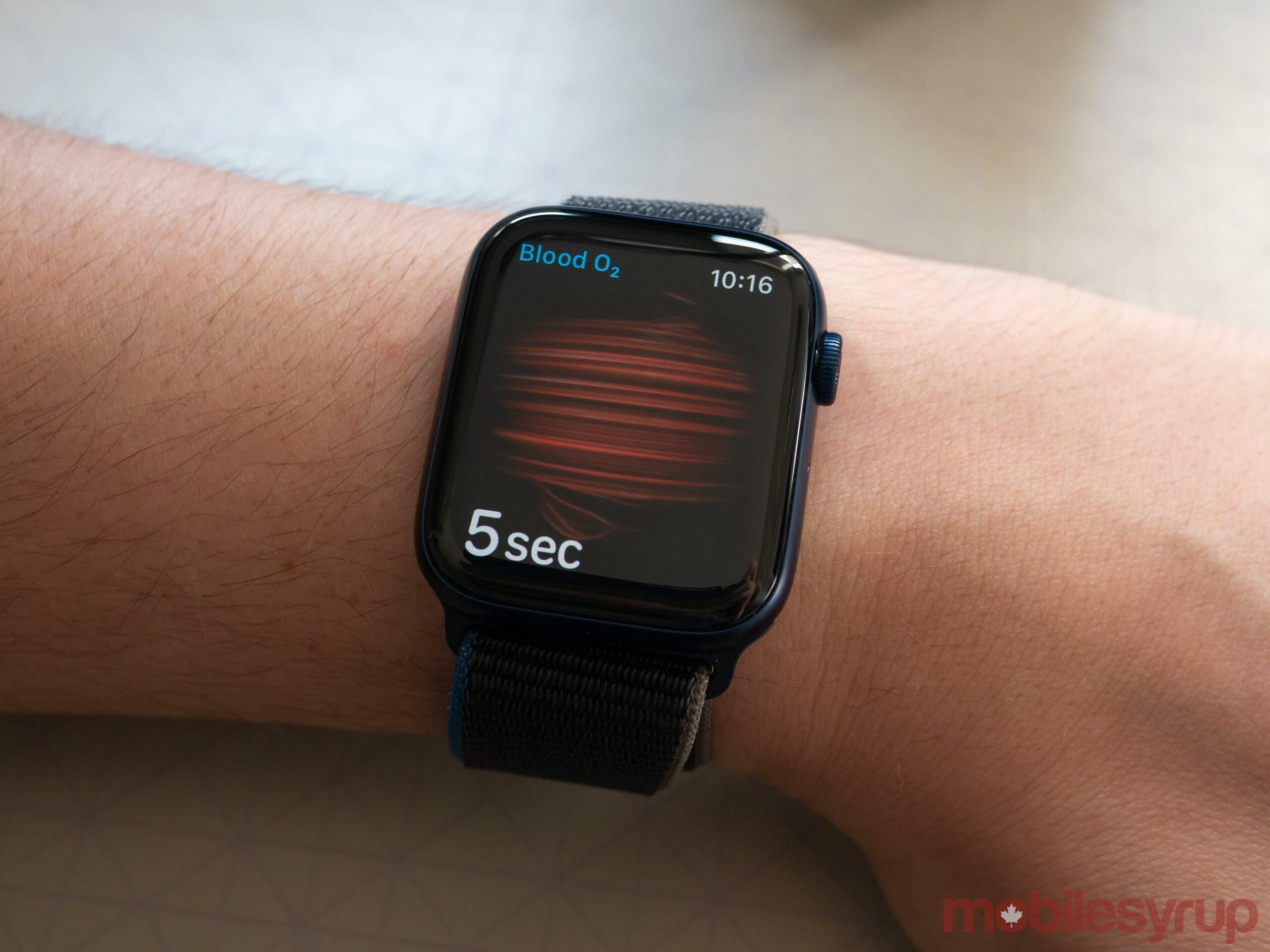
Though it took me a bit of time to locate the blood Oxygen app (also known as SpO2), the feature works quite well as long as you keep your wrist still and flat.
There are two ways that the Series 6 measures SpO2. First, you can launch the feature on your own with the app, but it can also detect your blood oxygen level in the background during the day or night. You can turn SpO2 on or off in the Watch’s Settings app.
The entire process is pretty quick and only takes roughly 15 seconds. In my testing, results typically came in somewhere between 97 percent and 98 percent. To be clear, Apple isn’t positioning this feature as offering an accurate diagnosis of health issues and, instead, says that it aims only to give a general understanding of what’s going on with blood oxygen levels in the wearer’s body over an extended period. I can’t speak to how accurate the readings are either, unfortunately, and I do find it strange that Apple isn’t leading the charge with getting SpO2 certified by Health Canada in the same way it did with ECG.

For example, a dip in SpO2 can indicate sleep apnea or asthma, but just because you see this information in your Apple Watch’s data, it doesn’t necessarily mean you have a health issue. Apple is participating in SpO2 medical studies, including detecting early signs of respiratory illness. The company says it’s also working closely with investigators at the Ted Rogers Centre for Heart Research and the Peter Munk Cardiac Centre at the University Health Network to gain a better understanding of how blood oxygen measurements can help with the management of heart failure.
I don’t find the new blood oxygen level detector essential to how I use the Apple Watch, but it’s interesting information to have readily available. I felt very similarly about the electrocardiogram (ECG) functionality Apple added to the Apple Watch Series 4 and the new always-on altimeter that offers real-time elevation monitoring (the altimeter is also in the Apple Watch SE).

Of course, depending on your health and what you personally want the Apple Watch for, the addition of the SpO2 sensor could be the functionality you’ve been waiting for, especially since devices like Samsung’s Galaxy Watch 3 and several wearables from Fitbit include blood oxygen level tracking.
It’s also worth noting that you can see the new sensors that power SpO2 detection on the rear of the smartwatch. Eight tiny infrared sensors are lined up in a circle instead of a big one in the centre. This makes the back of the Series 6 instantly identifiable when compared to the Series 5.
Brighter display, faster processor

The other upgrades this year are the addition of a brighter display and a faster processor. The screen itself looks very similar to the always-on display featured in the Apple Watch Series 5. Apple claims that the new screen is 2.5 times brighter, and while the display does indeed seem to illuminate more, the difference isn’t noticeable until you place the Series 5 beside the Series 6. For context, the Series 5’s display is 200 nits while the Series 6’s is 500 nits when in the dimmed wrist-down state, but can brighten to 1,000 nits when you lift your wrist to check the time or a notification. The upgrade in brightness seems to only relate to the wrist-down state given that the Series 5 also features 1,000 nits of peak brightness.
“Apple claims that the new screen is 2.5 times brighter, and while the display does indeed seem to illuminate more, the difference isn’t noticeable until you place the Series 5 beside the Series 6”
The increase in display brightness makes it much easier to quickly get at-a-glance information from the always-on screen when in direct sunlight. It’s also now possible to access the ‘Notification Centre,’ the ‘Control Center,’ tap on ‘Complications’ and change faces without having to wake the Series 6, which, while not super useful, might come in handy if you’re looking to adjust a setting while tracking a workout quickly.
Apple has also upgraded the Series 6’s processor this year for the first time since the Series 4. The new S6 chip, based on the iPhone 11 Series’ A13 Bionic processor, makes the Apple Watch Series 6 feel slightly snappier than its predecessor. Since I don’t use third-party apps often with the Apple Watch, I don’t feel the effects of this upgrade that much. Still, it’s nice that Strava launches a little quicker now than it did with the Series 5.
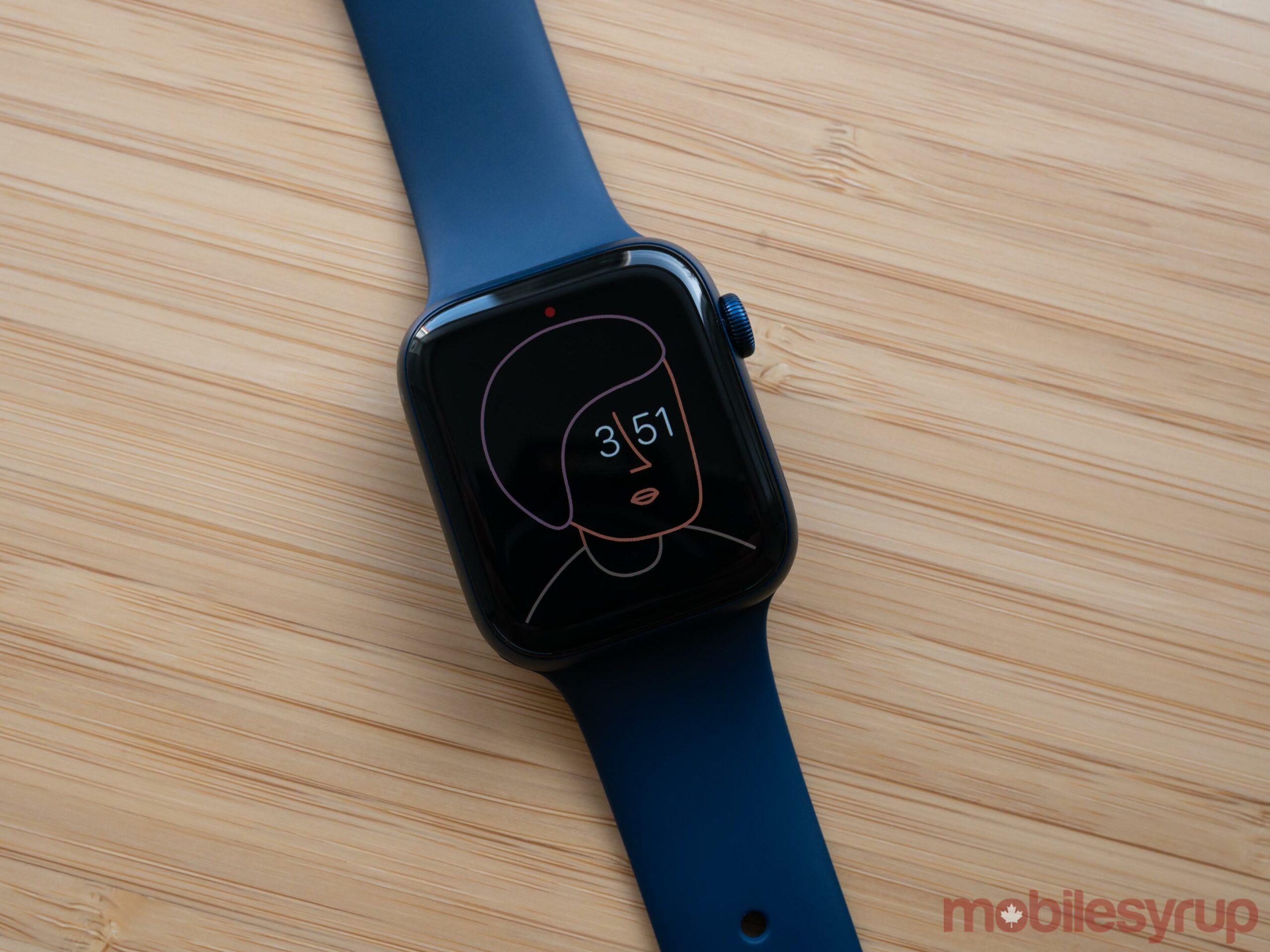
Unfortunately, battery life still measures in at a little over a day with the LTE version despite the new, more powerful processor that unfortunately doesn’t seem to be more energy efficient. That said, charging the Series 6 is much faster, allowing you to get a 100 percent charge in just 1.5 hours instead of two. If you’re using the new ‘Sleep’ tracking features and wearing the Apple Watch Series 6 all day, this is an excellent addition to the wearable.
However, the Series 6 and the new Apple Watch SE don’t include a charging brick in the box anymore, so you’ll need to purchase one separately if you’re a first-time buyer that doesn’t have an extra charger sitting around.
Other new hardware features worth noting include 5GHz Wi-Fi, which helps free up congested 2.4GHz at-home internet bands, as well as the U1 Ultra Wideband (UWB) chip that was first featured in the iPhone 11 series. Currently, Apple says that the U1 chip is designed to make using your digital car keys in the Wallet app easier, but it’s also likely compatible with the company’s often-rumoured AirTag Bluetooth tracking devices.
Blue and red
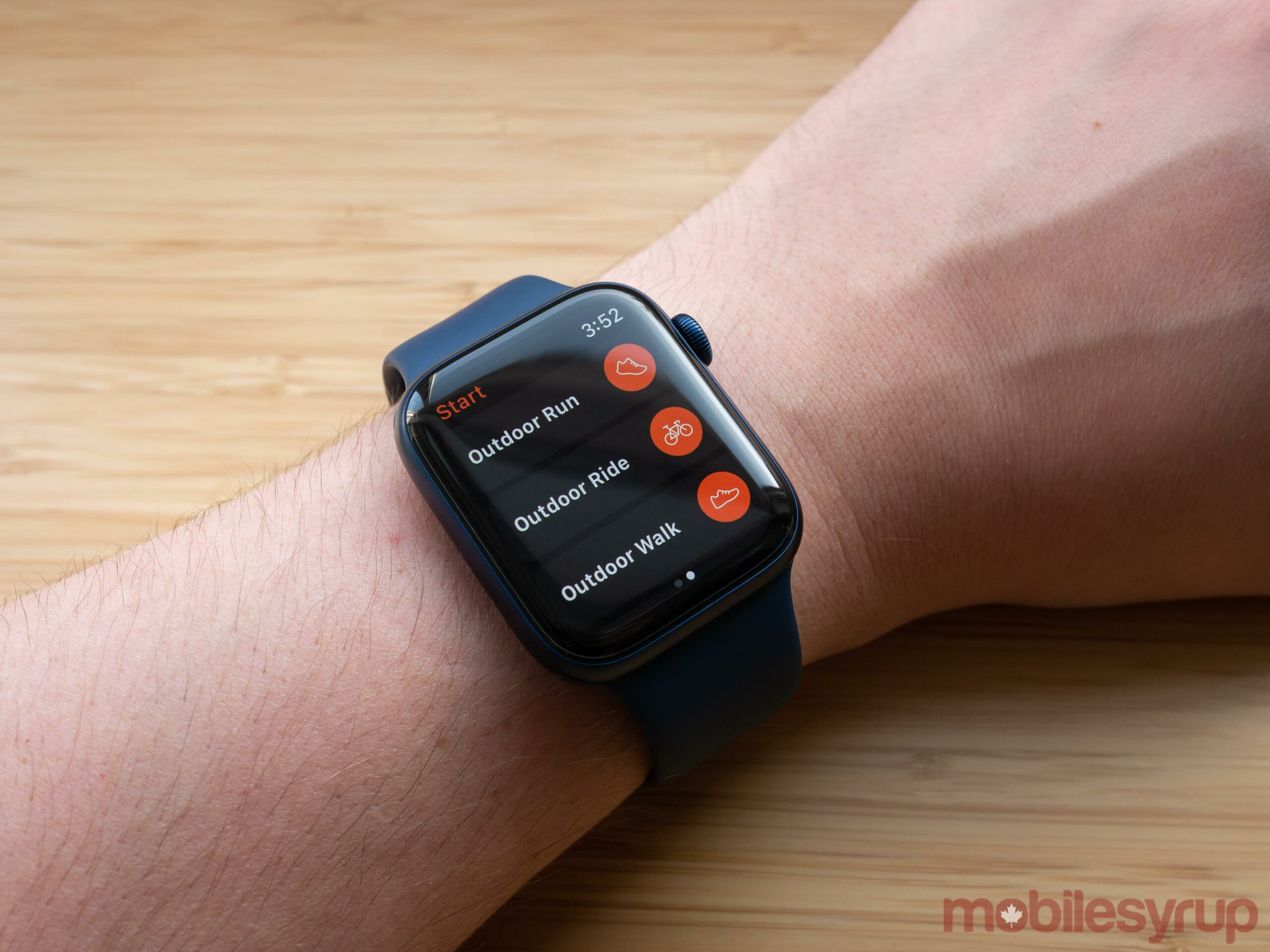
This year Apple has shaken up the colours it’s offering the Apple Watch in. First, there are new ‘Blue’ and ‘Product Red’ versions of the Series 6. As you can see from the photos in this review, the Blue Series 6 is a very deep blue. The colour stands out more than I expected. I don’t necessarily dislike the colour, but it’s not as low-key as other hues like ‘Silver,’ ‘Space Grey,’ and, to a lesser extent, ‘Gold.’
Swapping the matching blue Sport Band and going with a grey or white Band does make the blue a little less pronounced. That said, both the new Blue and Red colours always still standout, though that might be what some people are after when it comes to selecting their Apple Watch colour. If that’s the case, it’s likely that the new Red hue stands out even more than the Blue Apple Watch I currently have.
Of course, you can also get the Series 6 in either aluminum and the more expensive stainless steel variant. Though I don’t think it’s worth shelling out the extra cash for the stainless steel version, there is a nice-looking new ‘Graphite’ colour that replaces ‘Space Black.’
How it compares to the SE

One of the important questions surrounding the Series 6 is how it compares to the new Apple Watch SE. It features the same S5 processor as the Apple Watch Series 4 and 5, Watch Faces with complications, a bright display and the now pretty recognizable rectangular design.
What it lacks are the Series 5’s and Series 6’s always-on display, ECG and the new SpO2 functionality. While I don’t miss the latter two features, the fact that the SE doesn’t include an always-on screen is a deal-breaker for me.
Given that I use the Apple Watch as primarily a notification device and a traditional watch, the always-on display is a must. It gives me instant access to the information I need and doesn’t require the not-always-reliable lift-to-wake gesture featured in previous generations of the Apple Watch.
watchOS 7
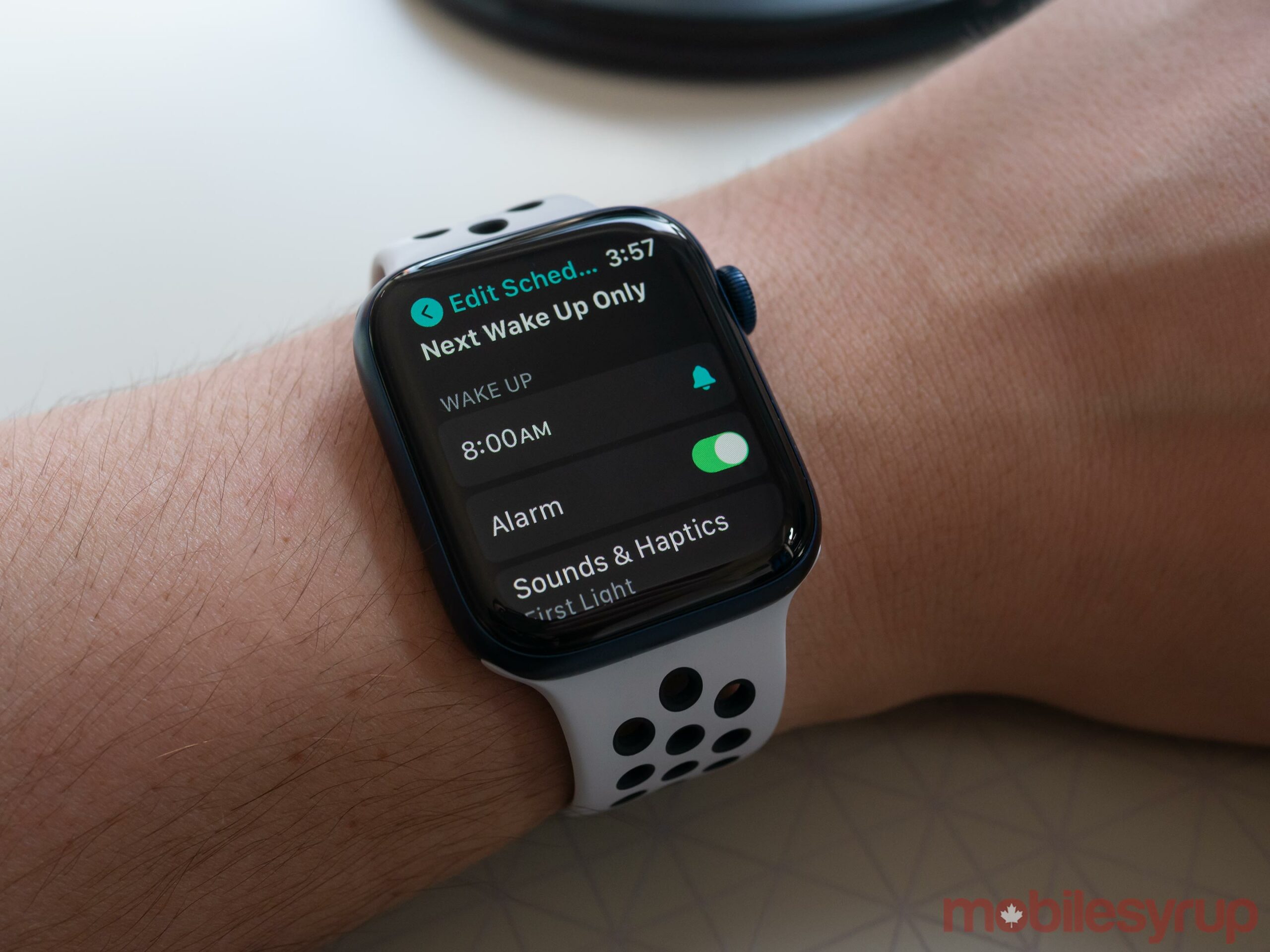
Like previous years, a lot of the Series 6’s best new features are part of watchOS 7, which is also coming to the Apple Watch Series 3 and above.
New functionality includes ‘Cycle Tracking,’ ‘Low Cardio Fitness,’ ‘Hearing Heath,’ ‘Handwashing’ and ‘Sleep tracking.’ While I’ve only tested out the new Sleep features for a few days, Apple has a different approach to this functionality than Fitbit. Instead of breaking your sleep into categories, it instead presents you with data like your heart rate and average sleep time, and then allows you to interpret the information how you see fit.
For example, if your average nightly sleep over the past seven days isn’t hitting the eight hours you’re aiming for, it might make sense to shift your ‘Wind Down’ setting to a little earlier. I’m not sure I like this approach to sleep data as much as Fitbit’s stages like ‘REM,’ ‘Light’ and ‘Deep,’ but it does end up accomplishing the same goal of helping you learn to sleep better. I also still find it difficult to wear a watch all night while I’m sleeping, just like I did with the Fitbit Versa 2.
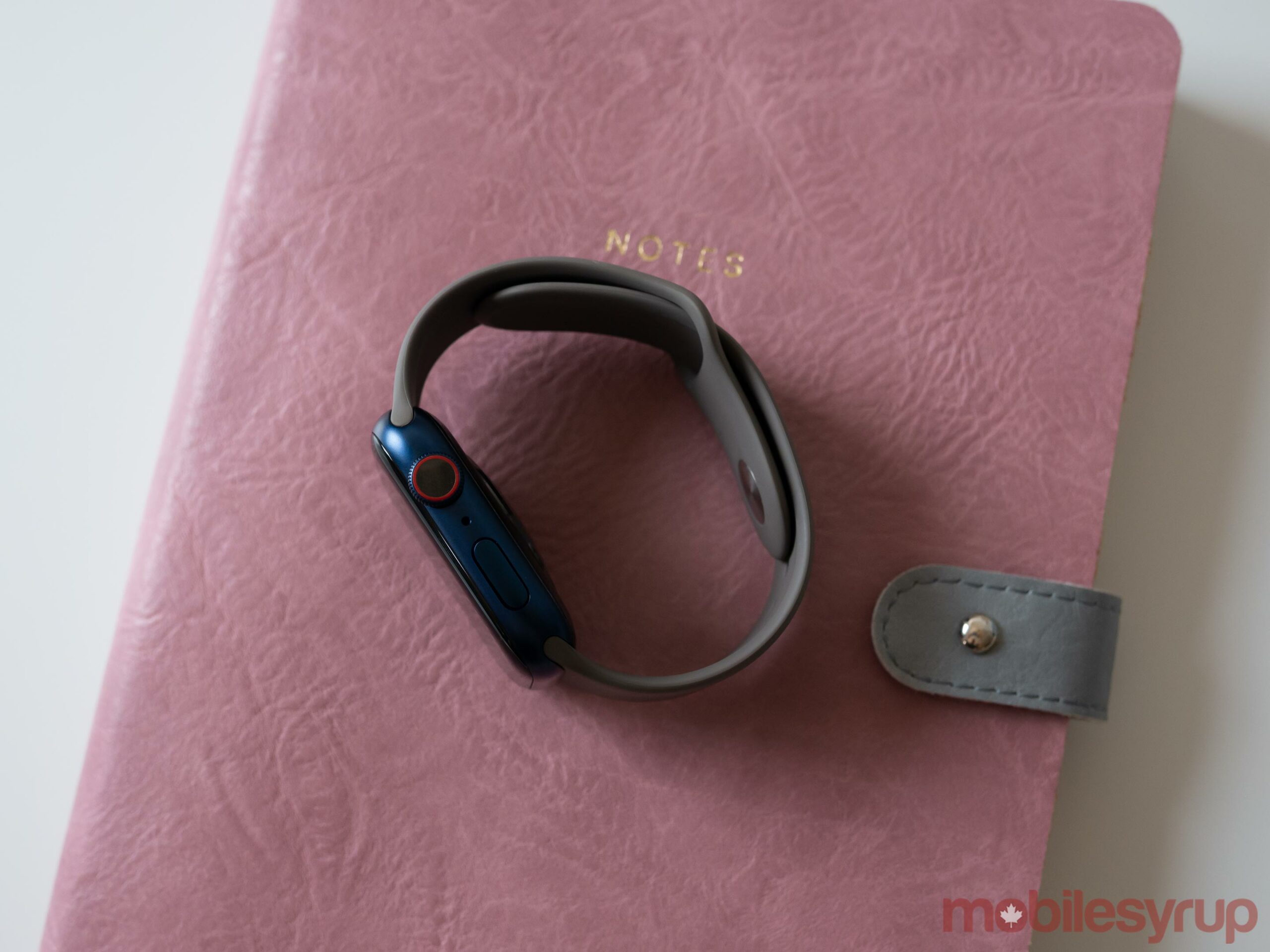
There are new Watch Faces as well, like the ‘Chronograph Pro,’ the wacky ‘Artist’ and the new ‘GMT’ Face. I still stick with the classic ‘California’ face because I like the subtlety of its customizable ‘Complications.’ Still, the new faces are interesting and welcome additions to the wearables’ steadily growing selection of Watch Faces. watchOS 7 also allows you to easily share customized Watch Faces with friends, which is surprisingly useful given how customizable they are now.
Unfortunately, ‘Family Setup,’ which allows a parent to control different aspects of their child’s Apple Watch, isn’t available in Canada currently since it requires carrier data networks. This feature would also be useful for managing an older adult’s Apple Watch. Hopefully, it arrives in the future. It is, however, finally possible to sync more than one Apple Watch with a single iPhone, which likely won’t be that useful for most people but is a long-overdue feature.
“watchOS 7 is a significant, very worthwhile update to the Apple Watch that adds several notable features to the Series 6”
Still, there are some things I wish Apple fixed with watchOS 7. For example, getting songs from Apple Music on the smartwatch’s 32GB of built-in storage remains an awkward experience, with tracks only syncing sometimes. One time I went out for a run and for some reason, nearly all of my music was deleted from my watch, forcing me to listen to Alanis Morissette’s “Reasons I Drink” on repeat for 20 minutes — which I kind of actually enjoyed.
Overall, watchOS 7 is a significant, very worthwhile update to the Apple Watch that adds several notable features to the Series 6 and, in true Apple fashion, is available on earlier versions of the smartwatch.
Time for a redesign?
With the Apple Watch hitting what feels like a point of maturity with the Series 6, I can’t help but feel like the smartwatch is finally ready for a subtle redesign. Though the Apple Watch remains light and relatively sleek, it would be great to see it get slightly thinner given it’s a device you always have strapped to your body.
Apple refreshes its iPhone design roughly every three iterations and it would make sense for the company to adopt a similar strategy with the Apple Watch at some point.
Of course, this would also require the wearable to still be compatible with the several accessories currently available for the Apple Watch line, which could prove difficult.
Hopefully, with the Series 7, Apple opts for more than just incremental hardware improvements and overhauls the wearable’s looks since it’s starting to show its age in an industry increasingly full of forward-thinking foldable smartphones and impressive-looking smartwatches from companies like Samsung.
Is it worth the upgrade?
As has become typical with new Apple Watches, whether this year's version of the wearable is a worthwhile purchase is a difficult question to answer, especially with the new Apple Watch SE now being available. If you've been waiting for an Apple Watch with an always-on display but didn't feel there were enough new features in the Series 5, the Series 6 could be the smartwatch you've been waiting for. In that same vein, while the wearable's new blood oxygen level detection isn't a feature I'm particularly interested in, it could be very useful for other people.
Still, I'd say that if you're rocking a Series 5 or arguably even a Series 4 and don't care about the always-on screen, there likely isn't enough new here to warrant an update. That said, if you're using a Series 1, Series 2 or Series 3, now is a great time to upgrade. The same can be said if you're a first-time Apple Watch user.
Similar to how some people feel when they enter their 30s, the Apple Watch finally knows what it wants to be and is comfortable in the direction it's headed -- in this case, a mix of being focused on health while still offering great notification functionality.
The 40mm Apple Watch Series 6 starts at $529 with the 44mm iteration costing $569. The GPS + Wi-Fi version costs $659 for the 40mm version and $699 for the GPS + Cellular iteration.
"The Apple Watch finally knows what it wants to be and is comfortable in the direction it's headed"
MobileSyrup may earn a commission from purchases made via our links, which helps fund the journalism we provide free on our website. These links do not influence our editorial content. Support us here.

